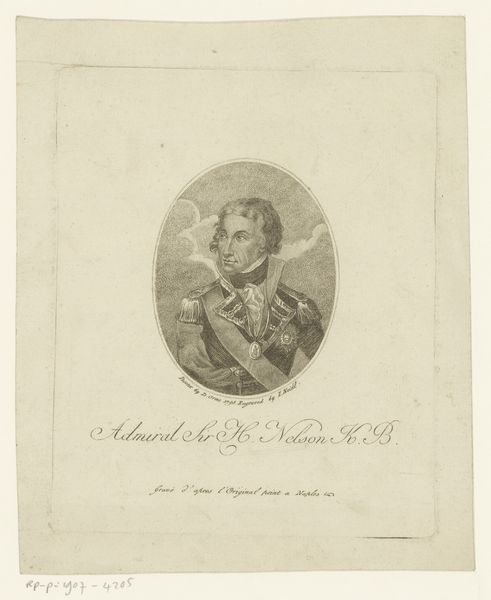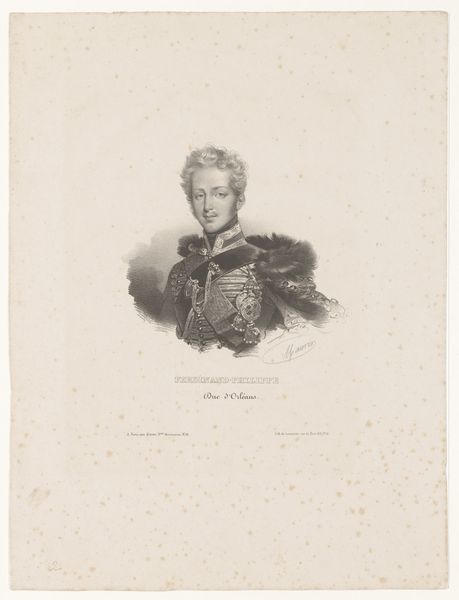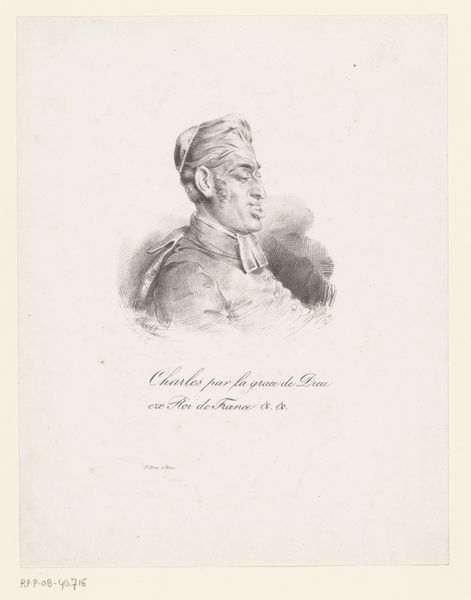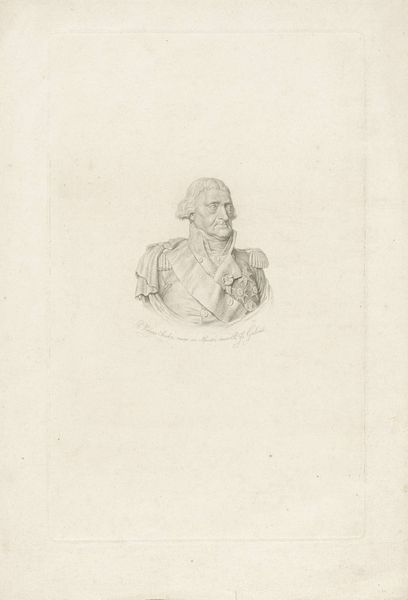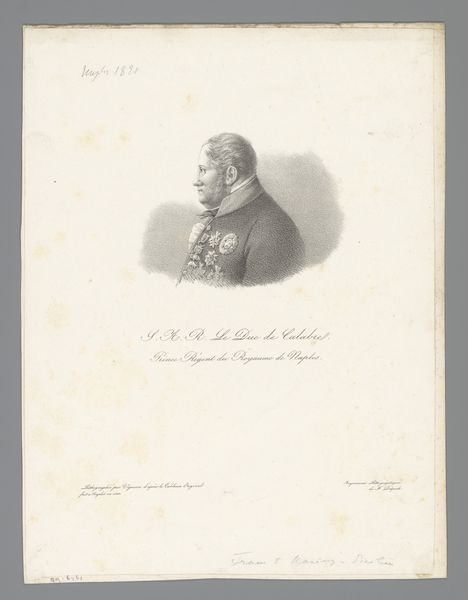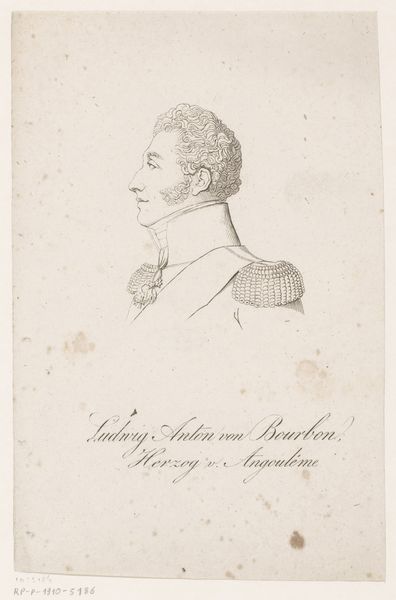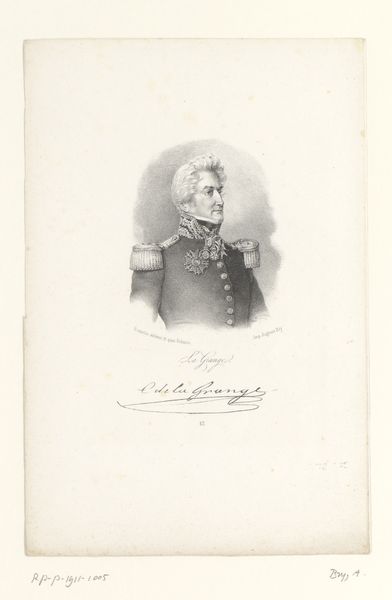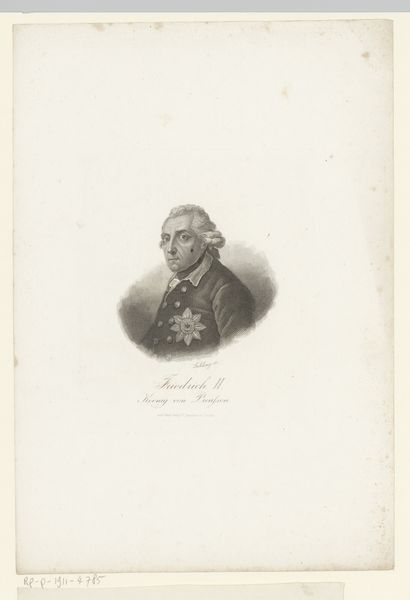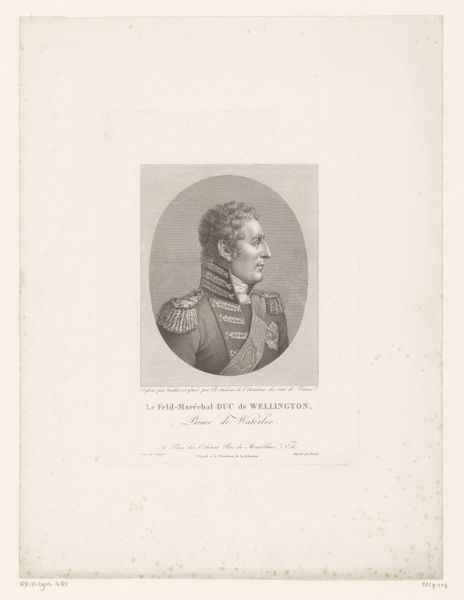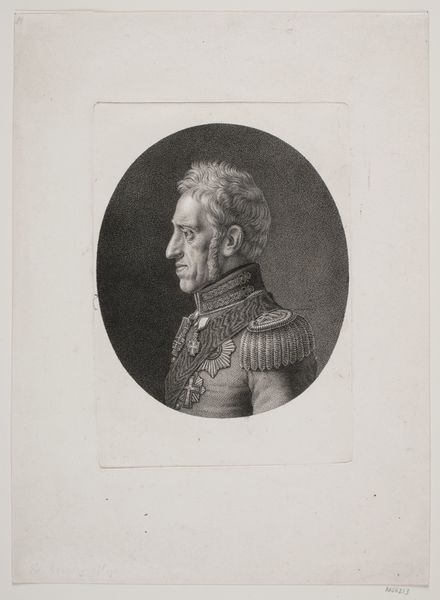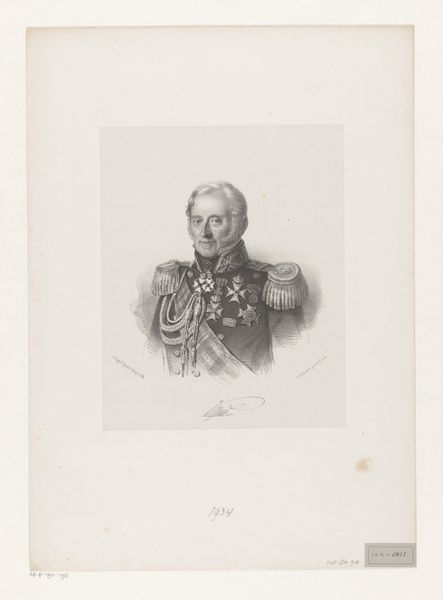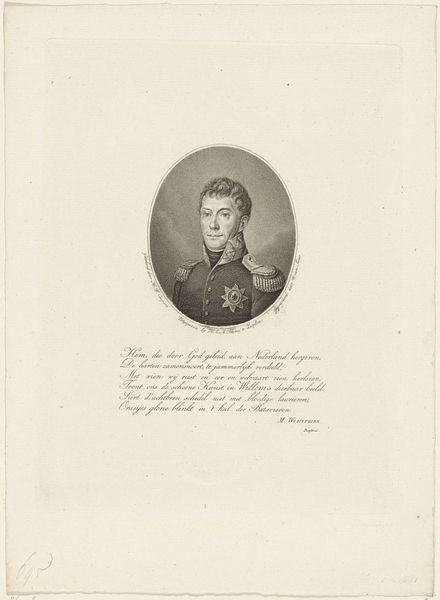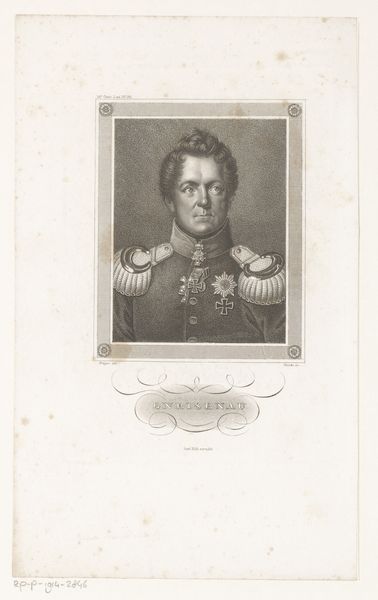
Portret van Leopold Joris Christiaan van Saksen-Coburg Possibly 1816
0:00
0:00
louisjeanallais
Rijksmuseum
print, engraving
#
portrait
#
neoclacissism
# print
#
history-painting
#
engraving
Dimensions: height 230 mm, width 142 mm, height 235 mm, height 148 mm
Copyright: Rijks Museum: Open Domain
Curator: Greetings. Before us, we observe a print entitled "Portret van Leopold Joris Christiaan van Saksen-Coburg," potentially dating to 1816, and currently held in the collection of the Rijksmuseum. It’s attributed to Louis Jean Allais. Editor: My word, he does look rather serious, doesn’t he? Sort of locked in a permanent state of... pondering destiny or perhaps worrying about the grocery bill? I can't decide, but I get the feeling the engraver softened up this ruler a tad. The man has an oddly vulnerable expression set against those severe lines of his military garb. Curator: Indeed. The technique is engraving, where the lines are meticulously incised to define form. Consider the rigorous use of line to create depth and shadow, a technique echoing Neoclassical aesthetics. Editor: Neoclassical—yes, all that control and reserve. It’s clear from those decorations dangling on his uniform. Yet, looking at the shadowing, particularly around his eyes and mouth, I see more of a yearning… a sense of perhaps imposed authority rather than truly relishing power? Curator: Intriguing observation. Semiotically, we read the crisp uniform, and the epaulettes are representative of status, of military leadership, reinforcing societal hierarchies and signifying power dynamics within early 19th century European nobility. The shading sets an immediate mood. Editor: Right! I imagine that living under the scrutiny of courtly life must feel very oppressive, like performing in a never-ending costume drama! What he truly needed was a few pajama days. Perhaps even some Netflix. Curator: (chuckles softly) A whimsical notion. But this engraving is an excellent demonstration of how printmaking served to disseminate images of power and influence during this era. Its formal qualities underscore its function as a representation of authority and status. Editor: Still, behind all that gilded presentation, you sense the human, maybe wrestling with being a symbol more than a person, perhaps that comes through despite those sharp lines and neoclassical angles. Curator: Indeed. Art allows us to interpret not only history, but human psychology. Editor: Precisely. Who knew a bunch of meticulously carved lines could speak volumes about our interior life?
Comments
No comments
Be the first to comment and join the conversation on the ultimate creative platform.
